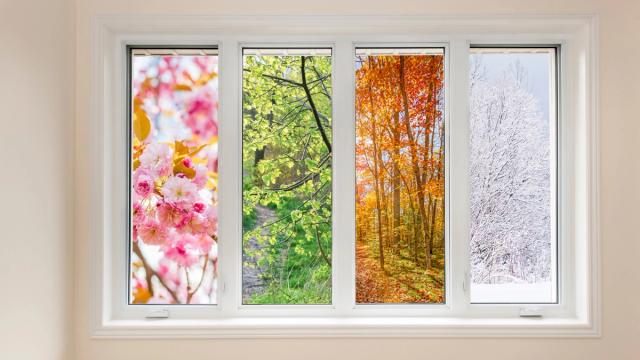Solution Selling: What Is It, and How Does It Work in HVAC?
Incorporating solution selling in your HVAC business can help you build stronger customer relationships and get repeat business, bigger deals, and more referrals.

If you’re an HVAC contractor, the past few years have likely been great for you. Homeowners have been replacing or upgrading their HVAC systems while they work from home. And with extra stimulus money burning a hole in their pockets, you may not have even needed to upsell to them.
But now that we’re on the other side of that replacement uptick, many homeowners have new systems that won’t need to be replaced for another 10-15 years. If you’re starting to see a decrease in replacements and an increase in repairs, you’re not alone. How do you keep that revenue coming in while replacements are down? By shifting your sales strategy to encourage repeat business.
Transactional Selling vs. Solution Selling
There are two primary types of selling: transactional selling and solution selling. Transactional selling is a tried-and-true method many businesses use; it’s what you experience any time you walk into a store. You’ve probably used it before, too — you do what needs to get done to close the sale today, then move on to the next call.
But there are downsides to transactional selling, too. Since these sales are one and done, you may feel like you have to upsell every single ticket to make a profit. Or maybe you’re so focused on closing that sale, you end up offering promotions or discounts that cut into your bottom line. This isn’t great for you or your customer, and can lead to low repeat business.
Solution selling is a way to increase sales activity while keeping both your and your customer’s best interests in mind. In this process, you and your staff operate more as consultants than salespeople. You take a look at the whole picture to see what your customer needs. Do they actually need a new HVAC system, or will a dehumidifier or smart thermostat solve their problem? Finding the right solution may result in a smaller ticket today but could bring more business in the long run.
Plus, you know the old adage, “You get what you pay for”? There’s no need for discounts when you’re offering premium service.
Benefits of Solution Selling
Solution selling can seem a little counterintuitive. In the example above, a dehumidifier or smart thermostat will be a much smaller ticket than replacing an entire HVAC system. But the key is to build profitable relationships. In the long term, that smaller ticket can result in repeat business, bigger deals, and more referrals.
For example, let’s take a look at auto shops. Does your family have an auto shop they always go to? There’s probably a reason why. Some auto shops use the transactional selling model and try to get the most out of you. They don’t need to change your air filters every time they change your oil, and you can fill your tires with air for free at the gas station. But they’ll try to sell you these services anyway.
If an auto shop does this to you, odds are you won’t return and will tell everyone to avoid that shop. But if they just change the oil and recommend changing your air filters or filling your tires yourself, you’ll likely go back in the future. You may even send your friends and family to them because you trust they won’t upsell unnecessarily.
This second auto shop looked at the bigger picture to see what you needed and suggested the best solution for you, not them. Upselling may have resulted in a bigger ticket one time, but instead, the auto shop will gain the long-term benefits of solution selling: repeat business, bigger deals, and more referrals. And if you try to solve your customers’ problems instead of looking at each job as a transaction, you could gain the same benefits.
Is Solution Selling Possible for HVAC?
This may all sound fine and dandy, but you may wonder if this will work for your HVAC business. Sure, you may have a customer every so often with a complex project, but a lot of time, it’s just a quick fix. How would this solution selling thing work in that scenario?
The truth is solution selling won’t be the answer for your HVAC business 100% of the time. There are going to be times when transactional selling is the answer. So, the best move for HVAC contractors is to combine the two methods and use them where they make sense.
Transactional selling may be your MO for services like emergency repairs. These services are short-sighted by nature — your customer wants a quick fix at the right price. They don’t want to hear about long-term solutions right now; they just want their problem solved.
This is a great time to leverage HVAC financing as a promotional tool to build and maintain relationships with customers. 57% of US adults can’t afford a $1,000 emergency expense, and financing can lessen that burden. When your customer sees how affordable a monthly payment can be, you can close the deal more quickly, especially if you offer same-as-cash financing or buydown programs.
Scheduled maintenance or upgrades will give you better opportunities for solution selling. Say, for example, you have a scheduled maintenance call. Your homeowner is a little chatty, so you ask open-ended questions to learn more about them. You find out that they’re interested in IAQ but can’t afford it right now.
Financing can help homeowners afford repairs and maintenance, giving you opportunities for bigger tickets while replacements are declining. So, you offer them financing options using a “good, better, best” model:
- Good – the maintenance cost
- Better – the maintenance cost, plus IAQ
- Best – the maintenance cost, plus IAQ and a smart thermostat
FTL Finance’s project estimator tool can take these total costs and break them up into manageable monthly payments. When you present these options to your homeowner, you’re offering a solution to pay for their scheduled maintenance and the IAQ they want. If they still want to stick with just their scheduled maintenance for now, take note of their interests so that you can recommend something next time or in a follow-up call.
 Sales StrategyUsing Seasonal Specials to Boost Your HVAC Business Year-Round
Sales StrategyUsing Seasonal Specials to Boost Your HVAC Business Year-Round Sales StrategyThink Like a Customer: The Psychology Behind Closing More HVAC Deals
Sales StrategyThink Like a Customer: The Psychology Behind Closing More HVAC Deals Sales Strategy, Financing Essentials3 HVAC Mistakes That Are Costing You Money
Sales Strategy, Financing Essentials3 HVAC Mistakes That Are Costing You Money